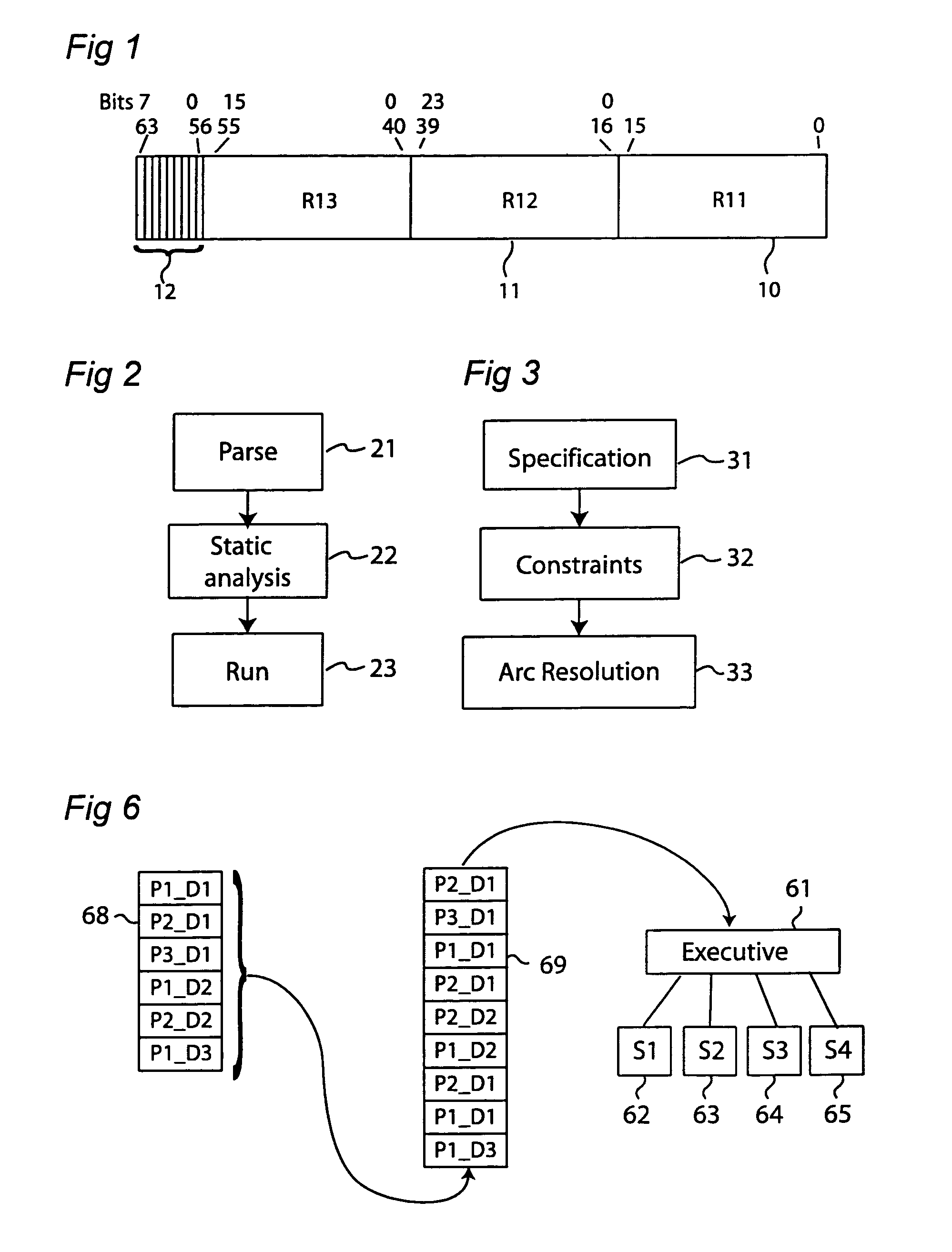System and method for test generation with dynamic constraints using static analysis and multidomain constraint reduction
a dynamic constraint and static analysis technology, applied in the field of system and method for dynamic constraint generation, can solve the problems of increasing the likelihood of design errors, increasing the complexity of design verification, and increasing the difficulty of design verification and time consumption, so as to reduce the amount of computation.
- Summary
- Abstract
- Description
- Claims
- Application Information
AI Technical Summary
Benefits of technology
Problems solved by technology
Method used
Image
Examples
Embodiment Construction
[0040]The present invention provides a system and method for resolving a test generation problem involving constraint resolution problems where a verification environment includes constraints that are suitable for resolution using one type of solver for a first domain and other constraints that are suitable for resolution using a different solver in a second domain. The invention further comprises variables and, in instances where at least one variable is in each of the first and second domains, using these solvers to restrict the set of permissible values of variables to be consistent in multiple domains, preferably in all relevant domains.
[0041]A constraint resolution problem is divided into clusters of constraints connected within a domain, and connected clusters of clusters that are connected through shared variables that are subject to constraints in more than one cluster. A preferred solver is applied to constraints in each of various domains such that constraints in multiple ...
PUM
 Login to View More
Login to View More Abstract
Description
Claims
Application Information
 Login to View More
Login to View More - R&D
- Intellectual Property
- Life Sciences
- Materials
- Tech Scout
- Unparalleled Data Quality
- Higher Quality Content
- 60% Fewer Hallucinations
Browse by: Latest US Patents, China's latest patents, Technical Efficacy Thesaurus, Application Domain, Technology Topic, Popular Technical Reports.
© 2025 PatSnap. All rights reserved.Legal|Privacy policy|Modern Slavery Act Transparency Statement|Sitemap|About US| Contact US: help@patsnap.com



